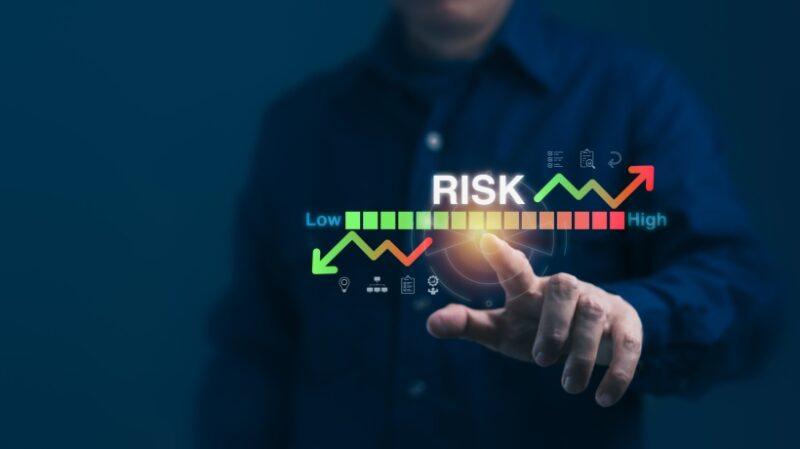
Training public health leaders with risk analysis with online education
Public health leaders need to be prepared for everything. Certainly, if Covid-19 teaches us anything, that’s it. But what does that mean from an educational perspective? As a society, how can we lead tomorrow’s public health leaders to the best possible course of instruction? Risk analysis with online education can provide a powerful answer.
By highlighting that areas of concern are most likely to affect widespread health outcomes, modern health leaders are better prepared to meet the needs of their communities. It sounds easy, right? Probably not. There is no real simplicity in the healthcare context, but there is a smart and effective approach. In this article, we’ll look at what health education degrees can do and how you can use them to assess risks and make a meaningful impact on your community.
Risk analysis overview
Risk analysis naturally assumes different meanings depending on the context. At the individual level, it involves assessing the needs of a particular patient and advising in a manner consistent with the best interests. For example, there may be multiple treatment paths that patients should consider. The most effective may pose the best risk. A sound risk analysis strategy can consider concerns about potential benefits and, importantly, communicate that information clearly to patients to make informed decisions.
Risk analysis is also conducted at the community level. For example, during Covid-19, the risks were not just the virus itself, but also the effects of isolation. On an individual level, it meant loneliness, depression and poor mental health. On a social level, it meant economic hardship. People couldn’t work, businesses couldn’t generate money.
The success of risk analysis in the Covid-19 era is still debated, but one thing is clear. Healthcare leaders face intense pressure. They weren’t making rules, but their recommendations shaped the public response. It was an extreme example, but the role and responsibilities of healthcare leaders do not disappear in the “normal” era. The need for thoughtful, balanced risk assessments is constant. Whether the question is a global pandemic or a health concern for localized communities.
Why online learning is an important resource
Online learning is not the only option for those looking to make a difference in public health. Traditional brick and mortar stores always have a place to shape the next generation of medical professionals. However, online education is an important tool. Especially for those who are already working in this field.
For example, consider a nurse. Many people work 12 hours shifts, often overnight. If they want to move into leadership or public health roles, it usually means obtaining a graduate degree or professional accreditation. Without online learning, doing so may require you to hold off your career or develop your education on an unrealistic long timeline. Online programs provide the flexibility you need to continue working while continuing to education. This is a combination that makes career growth much more accessible.
Are there any challenges with remote learning?
Of course there is. One of the biggest barriers to remote learning is that this is not a comfortable format for many labour health professionals. You can become a very good student and still not thriving in an online environment. A certain type of focus is required. You need to be spontaneous and be able to maintain focus in your home environment. There’s nothing wrong with anyone struggling to learn while one room in the kitchen sink is full of food. Children are seeking help with homework, and spouses are yelling at sports games on TV.
If you’re a healthcare professional who wants to be more involved in community-level risk assessments, but doesn’t succeed in online learning, that’s fine. You can find a brick and mortar program. It is within driving distance. Some take steps to mimic the flexibility of online formats.
Many universities understand that advanced healthcare courses appeal primarily to people who are already working, and that they plan course schedules with that in mind. Still, if you can learn well online, it is a flexible format that meets the needs of many students.
Find the right format for you
Depending on your learning preferences, there are various ways to pursue online education in community health risk management. Some programs replicate the structure of traditional face-to-face learning. You may be working from a table in the dining room, but you will be logged in at scheduled times, taking part in live lectures, participating in group projects and class-wide discussions.
This format will get the same structure as a brick and mortar program without commuting. You can also expand the pool of potential schools to include universities outside of geographical areas. That alone could be a great benefit for people living in remote or in underserved areas.
Other online programs are more flexible. These feature pre-recorded lectures, asynchronous discussion boards, and wide open dates where you can work at your own pace. That approach is suitable for busy, organized, and spontaneous learners, but may not be ideal for those who tend to procrastinate.
Finding the right format for you is primarily a matter of research and honest self-assessment. How have you learned the best in the past? There is probably a program that suits your learning style.
Conclusion
There are so many career paths in health education and other leadership positions that can have a significant impact on the community. Online learning options focused on risk management can help you prepare for the future. What kind of medical professional do you want to be? In a world of great social necessity, the sky is at its limit. Find the path that makes the most sense to you.


